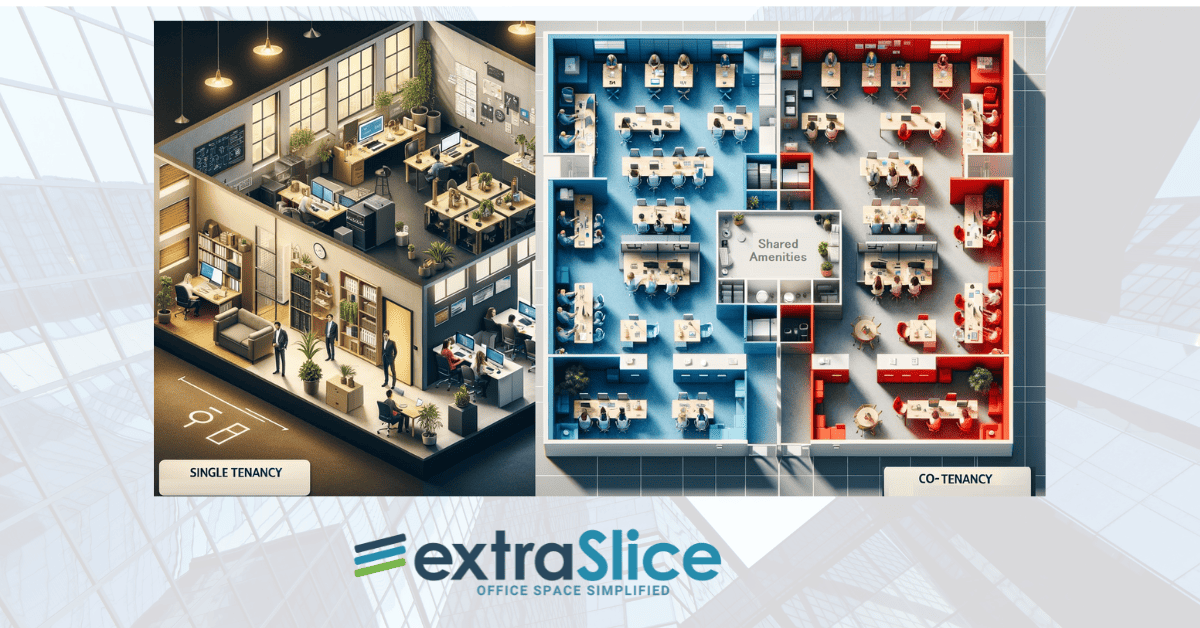Workspace as a Service (WaaS) presents businesses with a versatile solution that caters to different occupancy models, including Single Tenancy and Co-tenancy. Choosing between these options requires careful consideration of your company’s specific needs, growth plans, and preferences. In this comparative analysis, we’ll explore the distinctions between WaaS for Single Tenancy and Co-tenancy to assist you in making an informed workspace decision.
WaaS for Single Tenancy
Privacy and Control:
Single Tenancy WaaS provides dedicated, private office spaces for a single organization.
Offers greater control over the workspace environment, allowing customization to align with the company’s branding and operational requirements.
Ideal for businesses that prioritize confidentiality and exclusivity.
Security and Compliance:
Enhances security by limiting access to employees of a single organization.
Easier to implement and maintain specific security and compliance measures tailored to the organization’s needs.
Suitable for industries with stringent data security and compliance requirements, such as finance and healthcare.
Scalability:
Allows for scalability within the dedicated space, accommodating the growth and changing space needs of the organization.
Suited for companies with varying space requirements over time.
Productivity and Collaboration:
Provides a private and focused environment, conducive to productivity.
Collaboration can be facilitated through shared common areas or meeting spaces within the single tenancy setup.
Ideal for businesses that require a balance between individual workspaces and collaborative areas.
WaaS for Co-tenancy
Cost-Effectiveness:
Co-tenancy WaaS offers cost-sharing benefits, reducing the financial burden on individual organizations.
Shared expenses, such as utilities, maintenance, and common area amenities, make it a more affordable option.
Ideal for budget-conscious businesses looking for premium amenities without the full cost.
Networking Opportunities:
Encourages networking and interaction with other co-tenants, potentially leading to partnerships and collaborations.
Creates a vibrant and diverse community, fostering innovation and idea exchange.
Suited for businesses seeking to expand their professional network and explore new opportunities.
Flexibility and Agility:
Co-tenancy spaces often offer flexible lease terms and shorter commitments.
Allows businesses to adapt quickly to changing space needs without long-term obligations.
Ideal for startups, freelancers, and businesses with uncertain growth trajectories.
Resource Sharing:
Co-tenants benefit from shared resources such as meeting rooms, kitchen facilities, and reception services.
Access to amenities without the hassle of individual management can lead to improved efficiency.
Suitable for businesses that want to maximize resource utilization and reduce administrative tasks.
Conclusion
The choice between WaaS for Single Tenancy and Co-tenancy depends on your organization’s priorities, size, culture, and budget. Single Tenancy WaaS offers privacy, control, and scalability, making it suitable for organizations with specific space needs and security requirements. Co-tenancy WaaS is cost-effective, promotes networking, and provides flexibility, making it ideal for businesses seeking affordability and community engagement.
About ExtraSlice:
Since 2021, we at ExtraSlice have pioneered Work-as-a-Service (WaaS), transforming office leasing with cutting-edge Proptech. We offer a range of workspace solutions, from single-tenant offices to co-tenancy spaces, focusing on flexibility, efficiency, and choice for both tenants and landlords. Our approach is dedicated to modernizing the workplace experience to meet the dynamic needs of today’s businesses.
To learn more visit: extraslice.com






